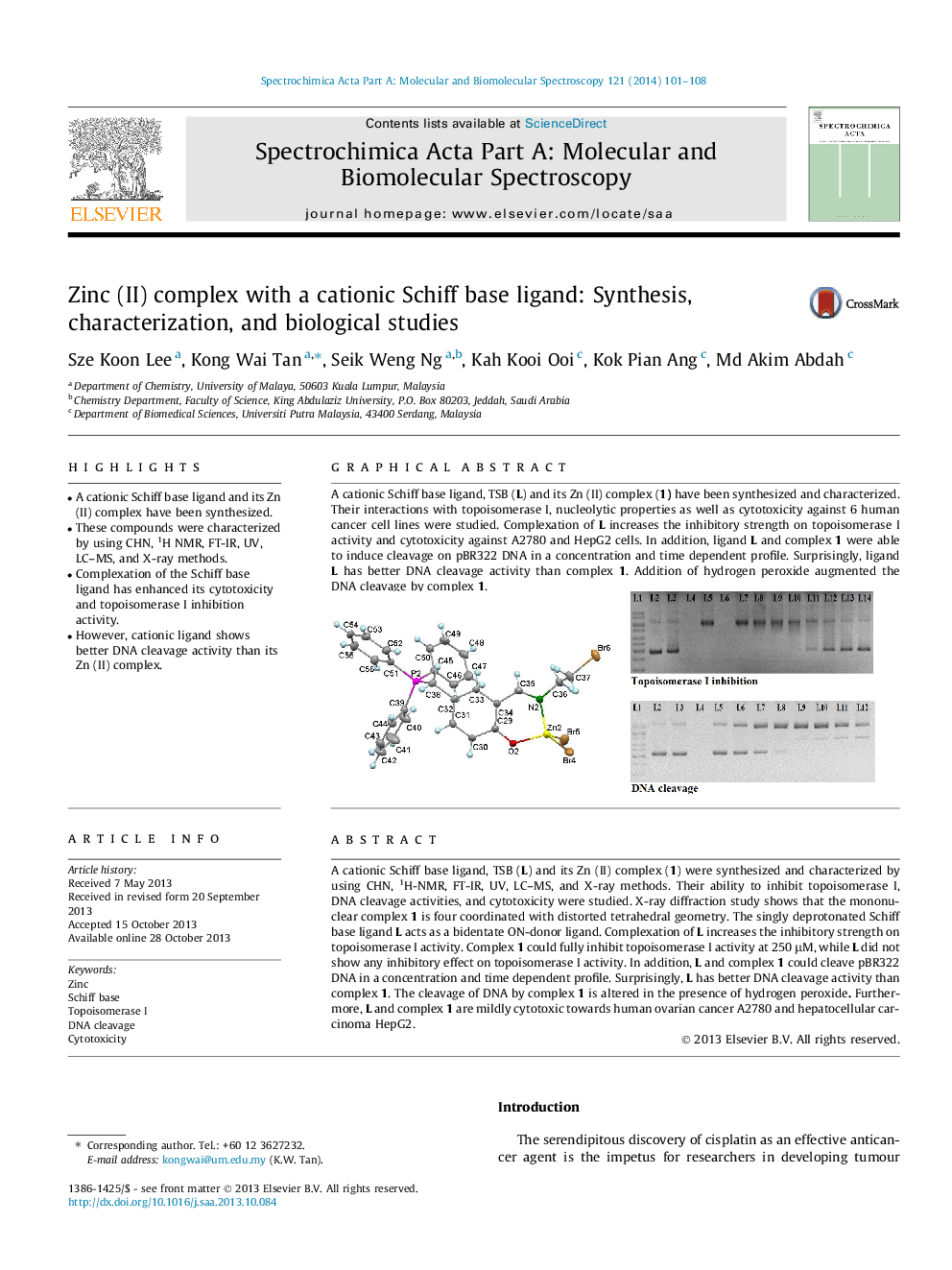| Article ID | Journal | Published Year | Pages | File Type |
|---|---|---|---|---|
| 1230451 | Spectrochimica Acta Part A: Molecular and Biomolecular Spectroscopy | 2014 | 8 Pages |
•A cationic Schiff base ligand and its Zn (II) complex have been synthesized.•These compounds were characterized by using CHN, 1H NMR, FT-IR, UV, LC–MS, and X-ray methods.•Complexation of the Schiff base ligand has enhanced its cytotoxicity and topoisomerase I inhibition activity.•However, cationic ligand shows better DNA cleavage activity than its Zn (II) complex.
A cationic Schiff base ligand, TSB (L) and its Zn (II) complex (1) were synthesized and characterized by using CHN, 1H-NMR, FT-IR, UV, LC–MS, and X-ray methods. Their ability to inhibit topoisomerase I, DNA cleavage activities, and cytotoxicity were studied. X-ray diffraction study shows that the mononuclear complex 1 is four coordinated with distorted tetrahedral geometry. The singly deprotonated Schiff base ligand L acts as a bidentate ON-donor ligand. Complexation of L increases the inhibitory strength on topoisomerase I activity. Complex 1 could fully inhibit topoisomerase I activity at 250 μM, while L did not show any inhibitory effect on topoisomerase I activity. In addition, L and complex 1 could cleave pBR322 DNA in a concentration and time dependent profile. Surprisingly, L has better DNA cleavage activity than complex 1. The cleavage of DNA by complex 1 is altered in the presence of hydrogen peroxide. Furthermore, L and complex 1 are mildly cytotoxic towards human ovarian cancer A2780 and hepatocellular carcinoma HepG2.
Graphical abstractA cationic Schiff base ligand, TSB (L) and its Zn (II) complex (1) have been synthesized and characterized. Their interactions with topoisomerase I, nucleolytic properties as well as cytotoxicity against 6 human cancer cell lines were studied. Complexation of L increases the inhibitory strength on topoisomerase I activity and cytotoxicity against A2780 and HepG2 cells. In addition, ligand L and complex 1 were able to induce cleavage on pBR322 DNA in a concentration and time dependent profile. Surprisingly, ligand L has better DNA cleavage activity than complex 1. Addition of hydrogen peroxide augmented the DNA cleavage by complex 1.Figure optionsDownload full-size imageDownload as PowerPoint slide
